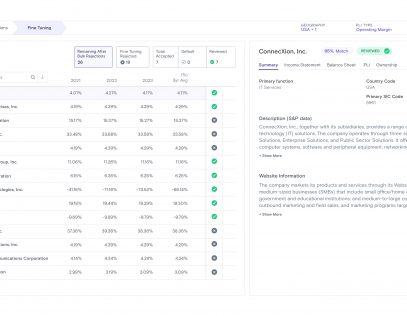Entities within multinational companies, or related parties, often buy and sell goods and services from one another. The prices for those intercompany goods and services are known as transfer prices. Intergroup pricing can significantly affect a multinational group’s taxable income in the different countries in which it operates. Moreover, globalization and growth in trade have given rise to an increasing number of cross-border transactions in the international market. As a result, we have seen a significant increase in transfer pricing disputes between tax authorities and multinationals in recent years. In fact, transfer pricing has become one of the most audited tax issues around the world.
Transfer pricing planning is, therefore, crucial to avoid potential audits, adjustments, and penalties. Planning also encourages subsidiaries to work towards the group’s mutual goals; and often it motivates entities to improve performance. With proper transfer pricing policies, a key element of transfer pricing planning, multinational groups can avoid conflicts over tax issues, as well as the repatriation of profits.
Most countries require taxpayers to demonstrate that related-party transactions, also known as intercompany transactions or intragroup transactions, are conducted at “arm’s length.” According to both OECD Guidelines, as well as U.S. transfer pricing regulations, this means that intercompany prices (and other terms) are the same inside the group as they would be between unrelated parties under the same or similar circumstances.
“Transfer pricing planning is crucial to avoid potential audits, adjustments, and penalties.”
The Transfer Pricing Life Cycle
Cross-border transfer pricing has a life cycle, which takes intercompany transactions from the planning stage all the way through documentation. There are four stages in a transfer pricing life cycle:
- Planning
- Implementation
- Monitoring
- Documentation
Transfer pricing planning is the most critical stage of the transfer pricing life cycle. During transfer pricing planning, taxpayers must ensure all intercompany transactions are structured in accordance with the arm’s length principle and that they comply with country-specific regulations in the jurisdictions in which they operate. Transfer pricing planning also provides multinational companies legitimate opportunities to reduce taxes in jurisdictions with favorable tax regimes, tax treaties, and other local tax/fiscal incentives. With planning, multinationals can enjoy incentives across regions and prevent tax losses from being trapped or underutilized in low-tax jurisdictions.
A well-structured transfer pricing model can significantly help cash flow management, external financing, and forex management. Multinationals can benefit from being proactive and having frequent discussions to consider how various business aspects may affect transfer pricing. Transfer pricing planning also helps multinationals determine appropriate arm’s length prices and simplifies the preparation of transfer pricing documentation.
How Tax Authorities See Transfer Pricing
Given that transfer pricing affects the amount of profit that a multinational group recognizes in each jurisdiction where it operates, tax authorities tend to give transfer pricing a lot of attention. Tax authorities worldwide usually question the appropriateness of intercompany transactions to ensure there is no profit shifting. They require multinational groups to demonstrate compliance with the arm’s length principle for transfer pricing by preparing transfer pricing documentation and benchmarking studies and, in some cases, submitting them annually with the tax return. This protects the jurisdiction’s tax base and raises much-needed revenues.
Country-specific income tax rules determine profit allocation, which in turn, dictates the overall taxes paid by a multinational group. Taxpayers may believe they are appropriately paying taxes in a given jurisdiction, yet tax authorities can claim that profit shifting is taking place.
Global Best Practices in Transfer Pricing Planning
Anytime a new transaction or structure is put in place, it’s a good idea to consult your tax advisor to get the best advice for transfer pricing implementation. Involving a tax advisor in ongoing strategic planning ensures that the following risks and opportunities are considered:
- Analysis of the tax regime in the country/region of interest to determine if it provides an opportunity to enhance business value
- Determination of whether the intended legal form of the overseas company’s business activities is consistent with how they might be perceived by a tax authority from a transfer pricing and economic perspective
- Analysis of regulatory and tax risks if the overseas entity’s profit level is below expectations
Taxpayers should design a sustainable transfer pricing system suitable for the intended business operations that ensures profitability and tax consequences follow the planned characterization and substance. A sustainable and robust transfer pricing system design will bear fruit in achieving optimal tax efficiency throughout the supply chain.
Typical questions to consider during transfer pricing planning are:
- Which transfer pricing models, methods, and policies should be adopted for price setting and price checking to ensure the intended operational results are achieved on a regular basis?
- Which profitability level should be targeted by each related party involved in the transfer pricing model?
- Is the transfer pricing system simple enough for the operations team to implement or adjust when results fall short of expectations?
Adopting a master file approach to transfer pricing documentation, where preparation and management of documentation are handled in a single location or regionally, can substantially reduce transfer pricing compliance costs. To develop an efficient and effective centralized transfer pricing compliance management tool, first, determine the various tax jurisdictions’ practices and expectations for transfer pricing documentation. If there are peculiarities in transfer pricing documentation in any jurisdiction, it must be determined how those differences will be handled. The frequency of updating the master file and local country files must also be considered as a part of any effective centralized transfer pricing management tool.
There is a cost associated with transfer pricing compliance, but non-compliance carries a much higher price. Business disruptions can occur during audits and companies may be forced to pay millions in transfer pricing adjustments and penalties.
What Happens Without Transfer Pricing Planning?
Without transfer pricing planning, multinational companies bear the significant risk that transfer prices will not be set within the arm’s length range. Multinational companies also lose the opportunity to understand the transfer pricing implications of new business initiatives. Failing to plan may lead to a need to adjust transfer prices due to significant year-end adjustments. Taxpayers also lose out on a good start to preparing robust transfer pricing documentation, the first line of defense during a transfer pricing audit. The OECD provided guidance on the transfer pricing implications of COVID-19. With effective planning, MNEs can implement the OECD’s guidance and be prepared for the tough audit cycle that lies ahead in the coming years.
“Without transfer pricing planning, multinational companies bear the significant risk that transfer prices will not be set within arm’s length range.”
Transfer Pricing Planning and COVID-19
Existing transfer pricing policies have been put under pressure due to the global COVID-19 pandemic, and for many companies, they’ll need to be adjusted. The pandemic has affected companies and regions differently and so multinational companies will have to access their tax positions on a case-by-case basis. Loss–split models may need to be implemented. Existing funding arrangements may require restructuring. Also, the pandemic may cause changes to intellectual property and brands that significantly impact royalty payments.
There could also be international tax and transfer pricing implications due to travel restrictions. Many existing comparables used in the past may now be in loss-making positions. Hence, taxpayers will have to determine if it’s advantageous to include loss-making companies in the benchmarking analysis.
Head–office services provided due to the pandemic may not pass the benefit test, and they should be analyzed for any further implications. Temporary relocation of business functions may impact a company’s functional profile and transfer pricing policies will need to be tweaked accordingly.
Due to COVID, additional cross–border financial support may have been provided by a related party. Taxpayers will want to ensure financial transactions are in accordance with the arm’s length principle. Even advance pricing arrangements may be affected—in some cases, taxpayers may find they’re no longer advantageous at all.
MNEs should consider the appropriateness of transfer pricing policies given changes to the business or the economic environment. Transfer pricing documentation is critical to establish why it’s appropriate to maintain the same transfer pricing policies or move away from them. Consider the implications upfront and collect evidence now to prepare contemporaneous documentation to support changes in economic circumstances. Transfer pricing planning will help.









